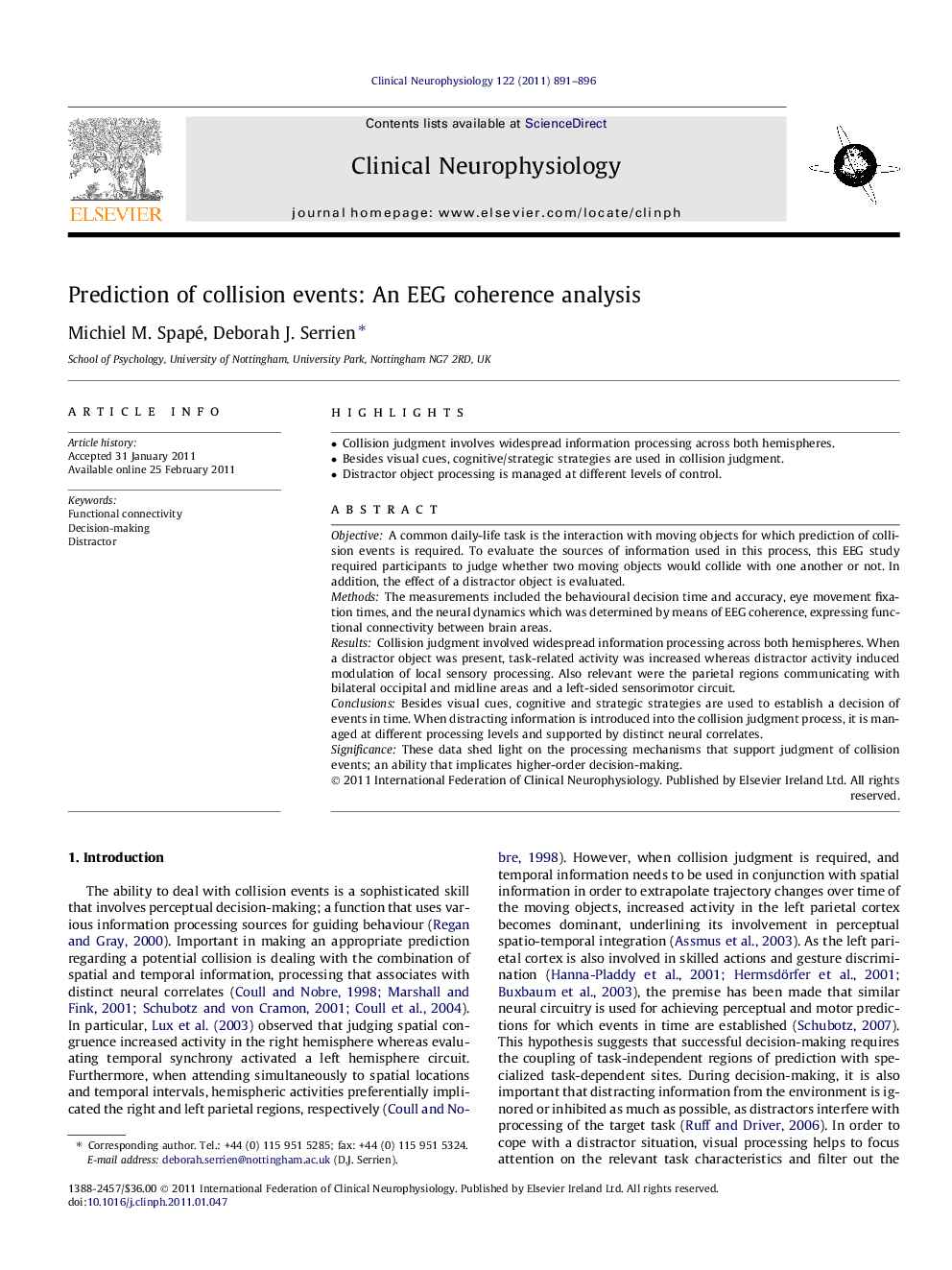| Article ID | Journal | Published Year | Pages | File Type |
|---|---|---|---|---|
| 3044466 | Clinical Neurophysiology | 2011 | 6 Pages |
ObjectiveA common daily-life task is the interaction with moving objects for which prediction of collision events is required. To evaluate the sources of information used in this process, this EEG study required participants to judge whether two moving objects would collide with one another or not. In addition, the effect of a distractor object is evaluated.MethodsThe measurements included the behavioural decision time and accuracy, eye movement fixation times, and the neural dynamics which was determined by means of EEG coherence, expressing functional connectivity between brain areas.ResultsCollision judgment involved widespread information processing across both hemispheres. When a distractor object was present, task-related activity was increased whereas distractor activity induced modulation of local sensory processing. Also relevant were the parietal regions communicating with bilateral occipital and midline areas and a left-sided sensorimotor circuit.ConclusionsBesides visual cues, cognitive and strategic strategies are used to establish a decision of events in time. When distracting information is introduced into the collision judgment process, it is managed at different processing levels and supported by distinct neural correlates.SignificanceThese data shed light on the processing mechanisms that support judgment of collision events; an ability that implicates higher-order decision-making.
► Collision judgment involves widespread information processing across both hemispheres. ► Besides visual cues, cognitive/strategic strategies are used in collision judgment. ► Distractor object processing is managed at different levels of control.
